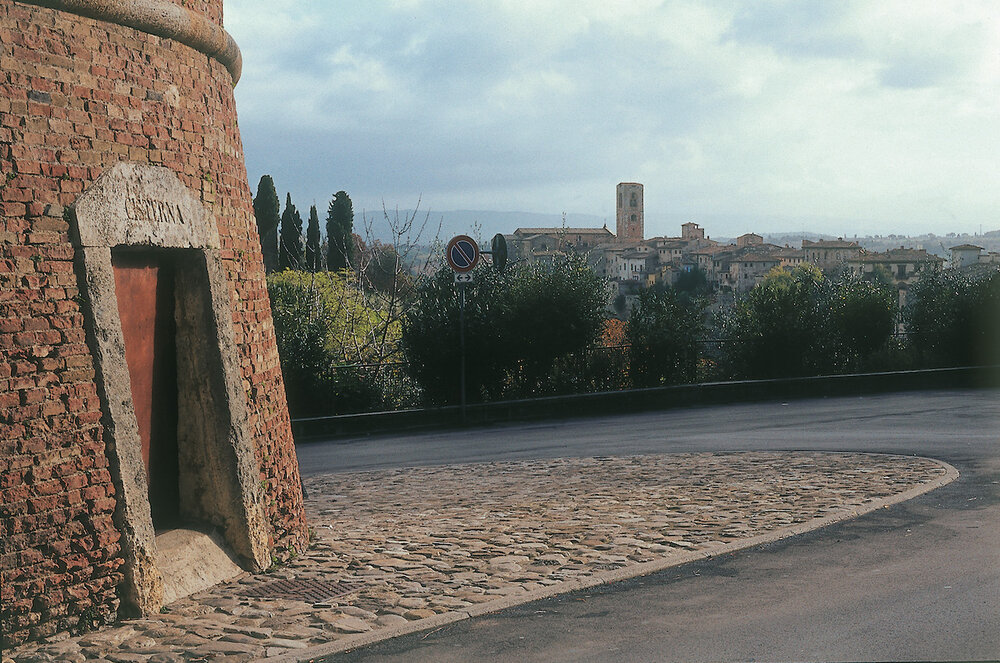In occasione della VII edizione di Art to Art, la curatrice Emanuela De Cecco ha chiamato a partecipare Marisa Merz a Colle Val d’Elsa.
"Just before the beginning of the main street that runs through the entire historic center of Colle di Val d’Elsa, there is an intersection where a massive circular building is found, which in the past functioned as the town’s cistern. Today, this space no longer serves its original purpose, but the atmosphere it communicates has remained intact: the cistern, in fact, resembles a miniature military fort, a mysterious place vastly different from everything around it, including the constant passage of cars, a difficult-to-access space designed to protect something precious contained within.
Marisa Merz decided to intervene on this structure with a simple and decisive gesture: the old wooden door is in fact replaced by the artist with a copper door. Copper, a luminous and malleable metal, is one of the materials the artist has always worked with. The artist has used it in threads to compose, knitting, her characteristic square or triangular shapes, where the use of this technique introduces a subversive element in the language of contemporary sculpture.
The flexibility of these surfaces makes them seem designed to adapt to the body: in several cases, Marisa Merz has intervened in open spaces, in particular situations such as on a beach, and other times she has arranged her shapes on the walls of exhibition spaces as clusters of figures. Outdoors, these forms appear to arrange themselves like plants or, rather, like living creatures.
Once again, Marisa Merz's work engages in a close dialogue with the architectural structure of the place where she has chosen to make her intervention: respecting the function of the door (with its surface and perfectly functional), the artist introduces a reflection on the symbolic value of the door as a passage, a threshold, and an introduction to another dimension.
If, in fact, Marisa Merz's door primarily alters the overall perception of the building by enhancing its presence – the door reflects the sun's rays, becoming a true point of light – it also marks the passage between the surface and depth, between what is visible and the invisible, between what presents itself as an immediate fact and what requires a form of concentrated attention, ready to accept the need to make that passage.
An intervention that implicitly stands in a vast distance from the sirens of easy spectacularity, where contemporary art offers itself as an element of relationship and intense dialogue with the signs of history without renouncing to request a conscious vision, to confront a language of not always immediate understanding, to cross the threshold..."
Emanuela De Cecco, Arte All’Arte VII, 2002

